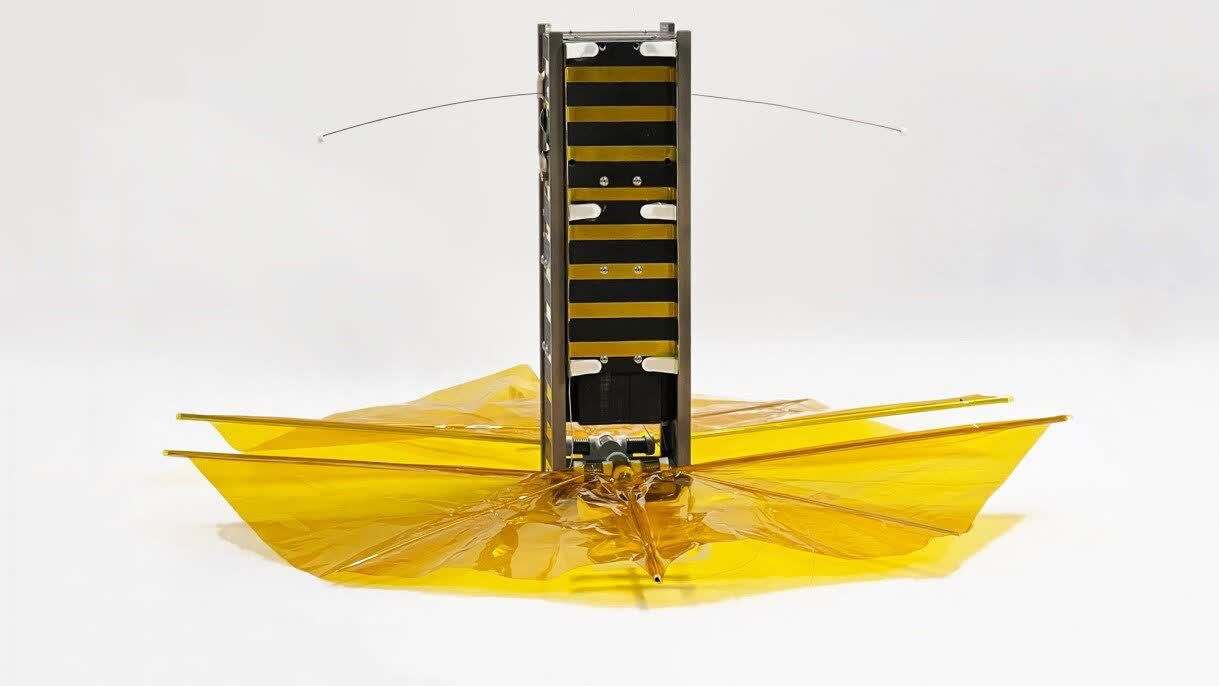In context: When most people think about space satellites, they probably imagine large assemblies costing millions. An experiment from Brown University seeks to upend traditional assumptions about satellites by finding ways to build them cheaply and without leaving behind space junk.
New data from a satellite built by college students shows encouraging signs that could lead to cheaper satellites and less space junk. One 3D-printed component, in particular, could contribute significantly to the fight to keep the space orbiting Earth clean.
Students and faculty from Brown University started the project in collaboration with the Institute on Atmospheric Pollution of the National Research Council. Italian aerospace company D-Orbit, AMSAT-Italy, La Sapienza-University of Rome, and the NASA Rhode Island Space Grant also lent support. Its name, SBUDNIC, is a play on the Russian Sputnik 1 satellite and an acronym of the participants' names.
The craft is a 3U CubeSat (about 10x10x34.05cm) that delivers low-resolution images from orbit with a total budget of around $10,000. Almost all its components are available from either Amazon or ordinary hardware stores.

The processor controlling the satellite is a $20 Arduino Nano BLE. The entire control system, including the CPU, motherboard, and other parts, costs just $175. A ham radio-based add-on handles communication, 48 AA batteries provide power, and the students 3D printed a drag sail that acts as an altitude control mechanism.
The students designed the sail to dramatically decrease the satellite's maximum lifespan, which could become a method to ensure space junk falls out of orbit more quickly. Space debris, comprised of either out-of-service satellites or jettisoned spaceship parts, has become a growing threat to anything we launch into orbit.
One project engineer estimates that most satellites stay in orbit for decades, even long after we no longer need them. The SBUDNIC craft should fall out of orbit within five years. The satellite launched on the SpaceX Falcon 9 rocket last May, deploying the sail at an elevation of 520 kilometers.
Public Air Force Space Command tracking data shows that the Brown University satellite is accelerating from its companions and approaching reentry. So far, SBUDNIC's orbit has decayed to 470km. In comparison, other small devices launched on the same rocket still orbit above 500km.
